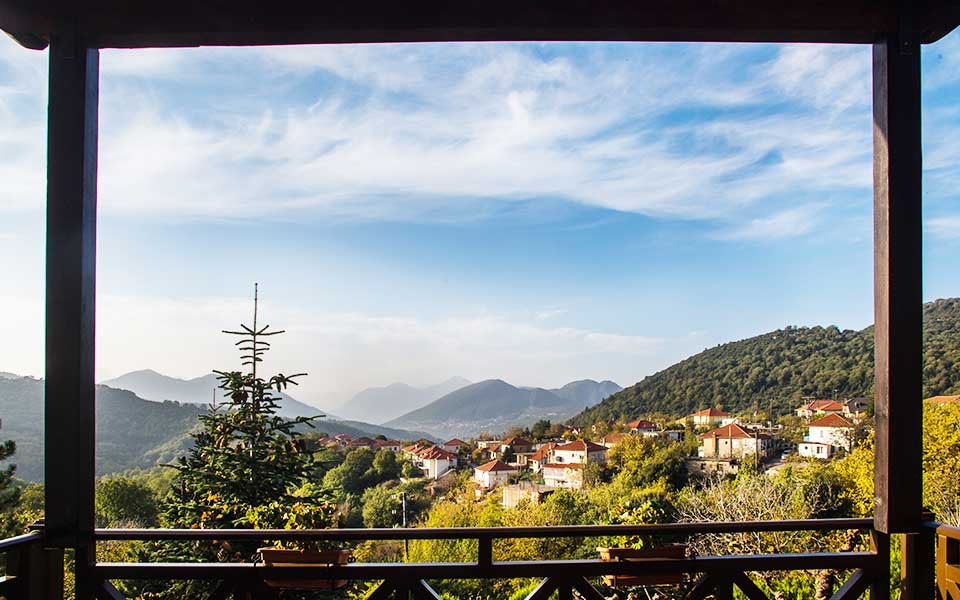“The Turks never marked this region on the map of Greece, because they never succeeded in setting foot here. This is why the region is called Agrafa [The Unmarked]!” says Costas Makkas, as he fills our glasses with mouro, the idiosyncratic and hard-to-find tsipouro of the region of Evrytania. As a host he does Agrafa proud, and maintains a guesthouse/taverna in the village of Krenti. And the fact is that Agrafa maybe the last remaining vestige of a Greece we used to know.
A few days earlier, when we had asked a local woman on the telephone whether the leaves in the gorge had changed color, we received the following marvelous answer: “How would I know, my girl, it’s been fifteen years since I last left the village.” Meanwhile the gorge is also Agrafa’s chief artery, a central route that stretches from Krenti (the gateway to Agrafa) all the way to Vragiana (on the borders with the prefecture of Karditsa); its 35 km can take as long as one and a half hours to cover, since it consists in large part of a rugged dirt road.
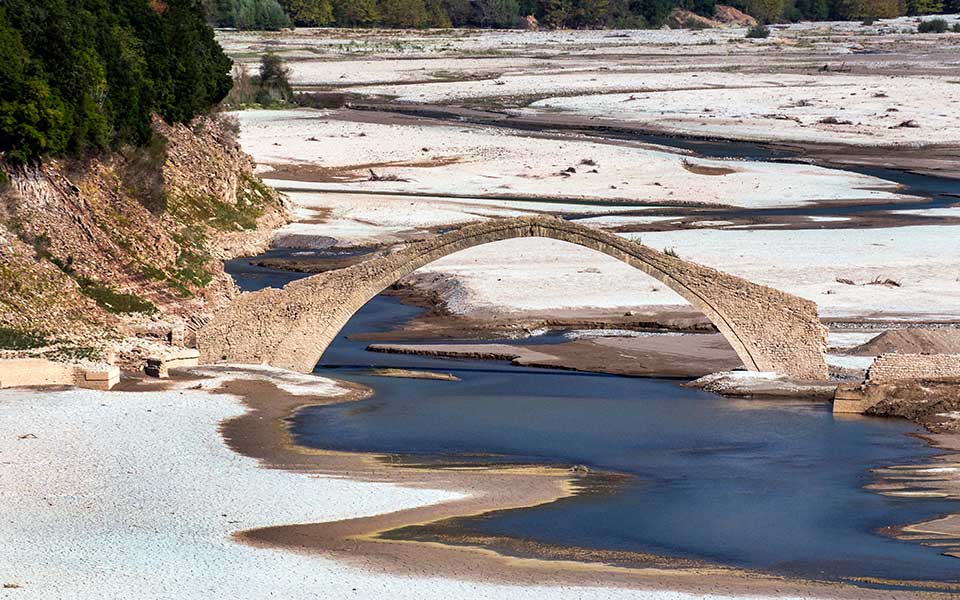
© Clairy Moustafellou
CHALLENGING ROADS, POWERFUL IMAGES
In general, things are tough during the winter months. Theoretically, road surfacing works began a few years ago, yet the asphalt still only extends as far as Varvariada, with a few extra “patches” along the way to Monastiraki and on the sharp bends where the road enters the villages. The works to widen and improve the road go as far as the village of Agrafa.
“We got electricity in ’82. The road running through the gorge was opened in ’87. Yet the bridges were only built in ’93! Just try and cross the Agrafiotis River without them,” says Niki, the owner of the eponymous guesthouse/restaurant in the village of Agrafa. “Other villages only got electricity and access to the main road much later.”
“This place has been a hard struggle for us, but what can you do. Mountains, ravines, all impassable, meters of snow cutting us off at Marathos, which has had a road since ’78; we couldn’t go any further. Yet it is an absolutely beautiful place.”
Inside the gorge you can see stone-built bridges, small military bridges, improvised suspended rope bridges made of tree branches, and even a karouli [winch] the name used for the local cable car: these were the means used by the locals to link the two banks of the Agrafiotis River.
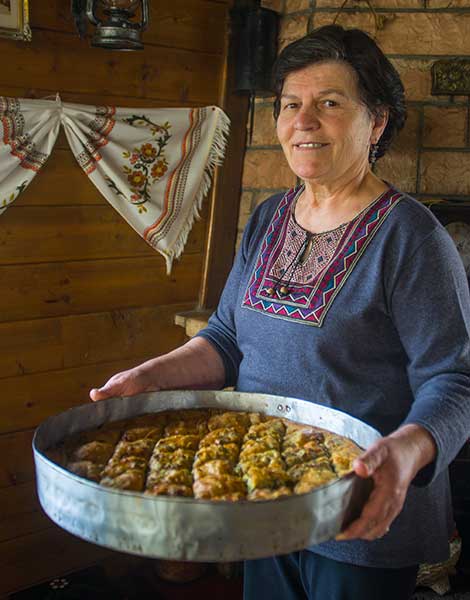
© Clairy Moustafellou
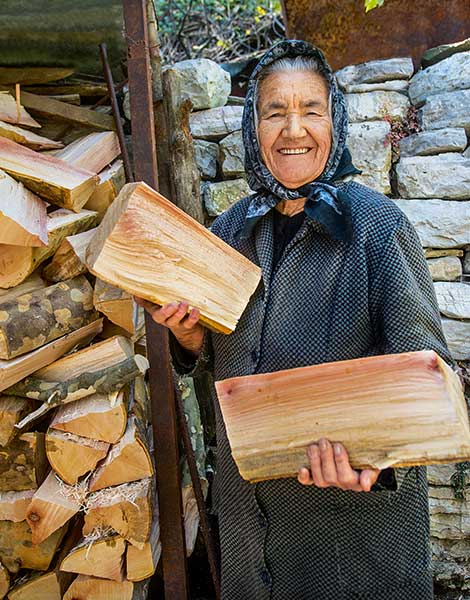
© Clairy Moustafellou
The postman comes once or twice a week. He delivers letters, pension pay slips, medicines. The greengrocer from Karditsa follows the same schedule. And this goes on even during the winter months. “If worse comes to worst, I might put on snow chains, although the road usually gets cleared up”, says Yiorgos Garilas, the postman. “I couldn’t just abandon them.”
Even today, rockfalls and landslips, ice and snow routinely cut off the region of Agrafa from the rest of Greece, as well as the local villages from one another. Perhaps this is why it is all that it is, a place of absolutely incredible beauty, with towering mountains that arrest your gaze, forests and alpine landscapes, gorges, torrential streams and rivers, sheer precipices and wild animals that frequently cross your path; there are also flocks of sheep and goats, one of the main occupations of the locals, yet one which is gradually beginning to disappear – due to the steadily increasing population of wolves, according to some.
In this landscape, which cannot fail to fill you with awe, you feel the insignificance of man in the face of nature, you can listen to absolute silence. You drive around dirt-track horseshoe bends, along narrow roads on the edges of cliffs, and over bridges that groan as they resist the thrust of the water underneath. You stand up straight before elderly matriarchs with rough hands and clear gazes. You do not come here simply for tourism. You come in order to connect with nature and life in the mountains, in order to find something that is real through and through; quite possibly, even in order to find yourself.
There are no luxury guesthouses here, only a few rooms equipped with the bare necessities. Most often they have wooden beds, dating back to before the war, a sheet and a blanket, and still you feel grateful that you did not end up with nowhere to sleep. Not that anyone, of course, would leave you stranded – as much hardship and poverty the local people of Evrytania have known, that is how generously they offer their hospitality. At the local coffee shops, the cast iron stoves are already smoking, and the weathered faces around them have something almost otherworldly about them. The warm greetings are many – their effusiveness is truly remarkable.
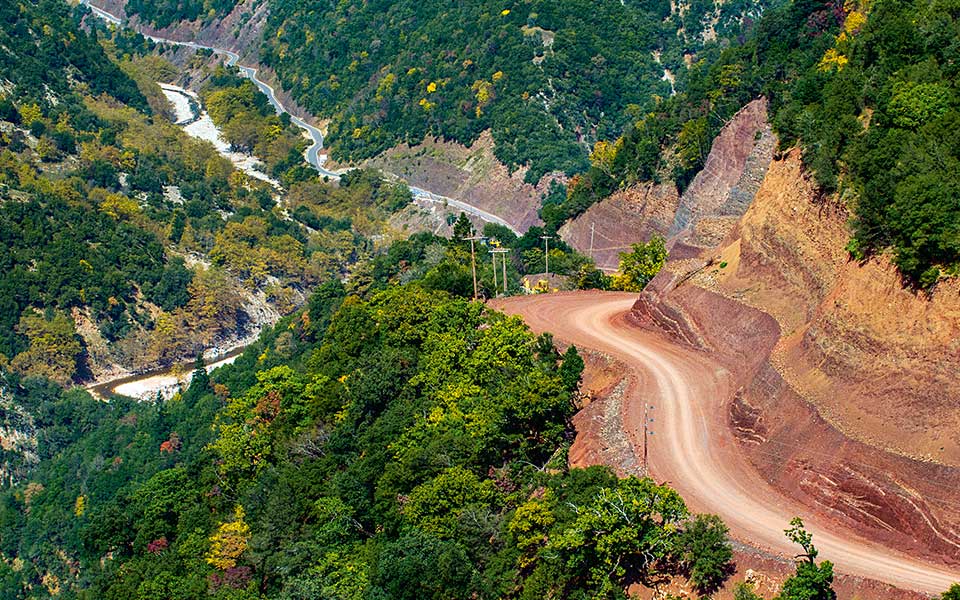
© Clairy Moustafellou
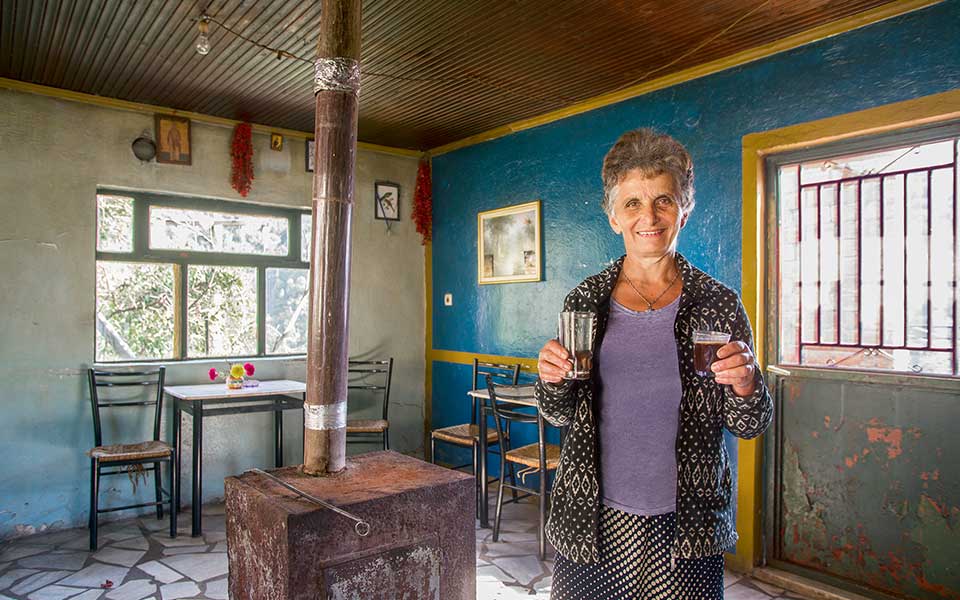
© Clairy Moustafellou
THE WINTER BRAVEHEARTS
In Agrafa you can enjoy driving routes through nature or walks along magnificent paths that the locals will point out to you. Everywhere you will see old sheds and corrugated roofs, or elsewhere tidy stone houses, and, every so often, a statue of the revolutionary hero Katsantonis casting a stony gaze over the mountains: the homeland of the celebrated freedom fighter pays him tribute with monuments, songs, and stories about his exploits in the mountains of Evrytania.
Krenti is situated right on the main road that leads from Karpenisi to the lake of Kremastes. It is a vibrant village with 250 inhabitants, a school with about twenty-odd students and a petrol station – it would work well as your base. Costas Makkas at the eponymous guesthouse still follows the same philosophy that once used to sustain all mountain communities, namely that of self-sufficiency. He keeps livestock, makes cheese, wine and tsipouro, tends to his vegetable patch, and on top of all that is an excellent cook. Together with his brothers, he can give you directions for possible excursions in the surrounding area.
As you turn left on the main road of Agrafa, your first stop will be Varvariada. You will find that the famous shack of Barba-Lambros, immortalized in the documentary “Katsantonis Leap and Uncle Lambros”, by the director Yiorgos Kolozis, is now closed. Yet you will see the two regional buses that now serve as depots for wood and hay – Panos Tsigaridas, who lives here, was for many years their legendary driver. This is where the road for Marathos begins, Katsantonis’ village. It takes about ten kilometers’ worth of dirt road along the very edge of the precipice to get there – and once you do, you will not be able to imagine how people chose this particular spot to build their village, or that it used to be inhabited at one time by 300 souls. Today only some cats still wander around the truly beautiful Church of Taxiarchis, dating from 1760.
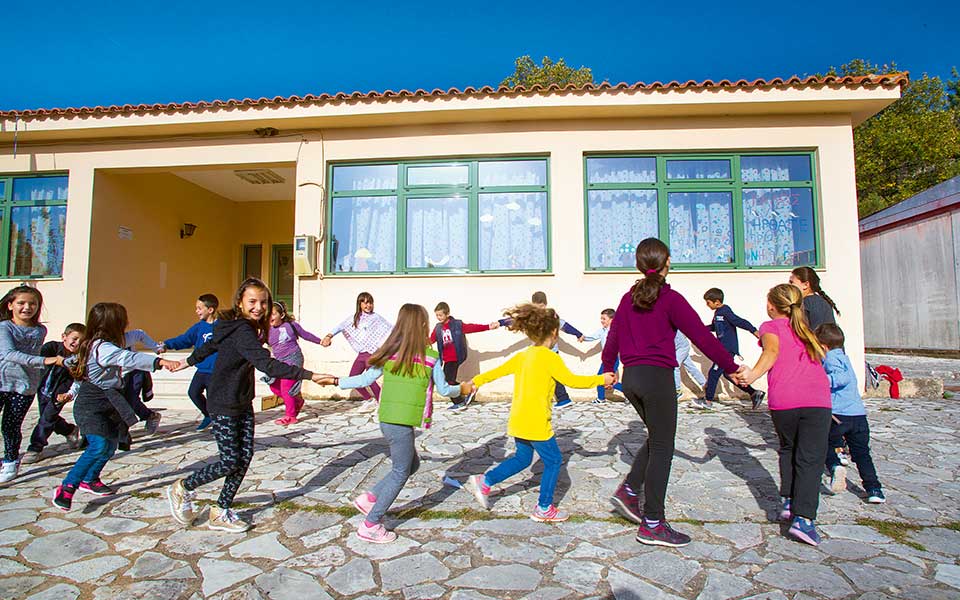
© Clairy Moustafellou
Not a single leaf stirs in the village of Monastiraki either. Olympia Bakoyiannis piles up firewood right next to the front door of her house. “If there is a heavy snowfall here, we do not budge,” she tells us, and takes us by the hand to invite us to sit for a cup of coffee.
In the village of Agrafa, the school operates with four pupils, there is always something cooking at the three kafeneia, and the average age of the inhabitants is about 80. “In the past, this used to be the administrative center of the municipality. Now that half of Evrytania is a separate municipality, the center has been moved to Kerasohori. The real Agrafa, however, consists in fact of seven villages,” says Niki, of the eponymous guesthouse/taverna, and tunes the radio to Program Two of the national radio service. During the summer, all the villages come alive. Visitors, and particularly people who hail from here but live in the cities, come to for their holidays. In the winter, the region is a favorite destination of a small number of true explorers, including motorcyclists and hikers.
On the weekends, there is also a lot of activity at the village of Epiniana. Several hiking clubs have discovered the guesthouse of Costas Gadtzoudis, the president of the village. This is also the starting point of the path to the famous Asprorema, and the Monastery of The Holy Virgin of Stana is to be found here; it was built among the rocks in the 18th century, and is now inhabited by a single, delightful monk.
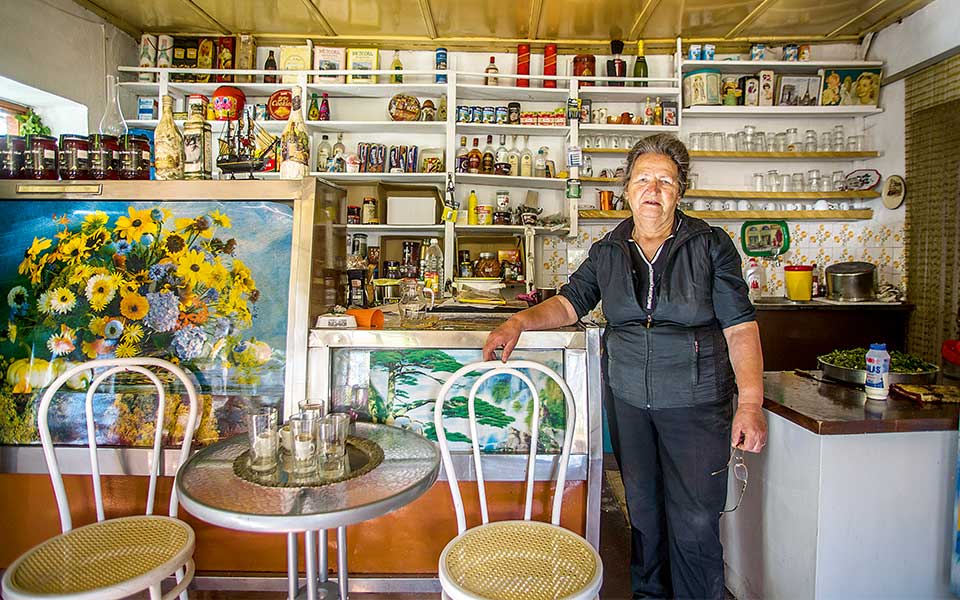
© Clairy Moustafellou
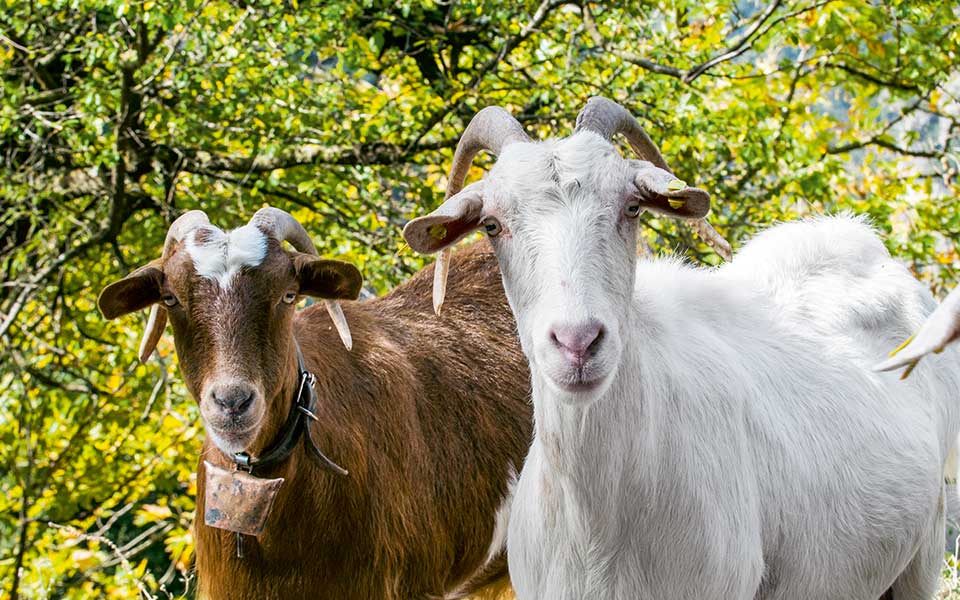
© Clairy Moustafellou
The village of Epiniana became deserted during the 1970s, to such an extent that all the houses fell into ruin. Against the grain, the president decided to move back here with his family in 1985, and to urge friends and relatives to do the same. “The road to the village had not yet been opened. We obviously had no electricity or a school of our own. I used to take my daughter to the school at Agrafa on foot, and we would cross the Agrafiotis River in the cable car. The following year I made a request for a teacher to come and teach three pupils. They told me that they would only provide a teacher for four or more. I dug in my heels, and enrolled my four-year-old son, telling the teacher to make him repeat the year. He was a keen learner in the end, and finished school at 16,” he concludes, laughing. Now there are 10 people living in the village during the winter.
There are as many living in Trovato, with its big square and two kafeneia, one of which still remains open. You will fill your water flasks with water from the mountains of Evrytania, offer your greetings to Olga Koutsouda, who will welcome you and treat you to renditions of rebel war songs, and you will conclude your journey at Vragiana. There are ten inhabitants here as well, yet they are scattered across five neighborhoods and kafeneia. This historic village on the border of the regional units of Evrytania and Karditsa, and therefore also on the boundary between Central Greece with Thessaly, used to be wealthy and densely populated; it had workshops specializing in different crafts, it even boasted an Ellinomouseio, a school with thousands of pupils, where seminal figures such as Yiannoulis of Aetolia and Anastasios Gordios used to teach. Today you can see the village’s beautiful churches: those of Aghia Paraskevi, Aghios Georgios, Aghios Dimitrios and Saint John the Theologian. And if you are lucky, and the priest happens to be in the village, you can also see the churches’ interiors and their important sacred artworks, created by artists from Agrafa.
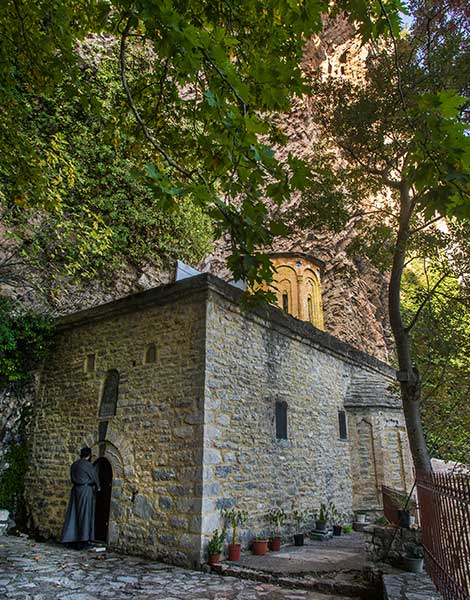
© Clairy Moustafellou
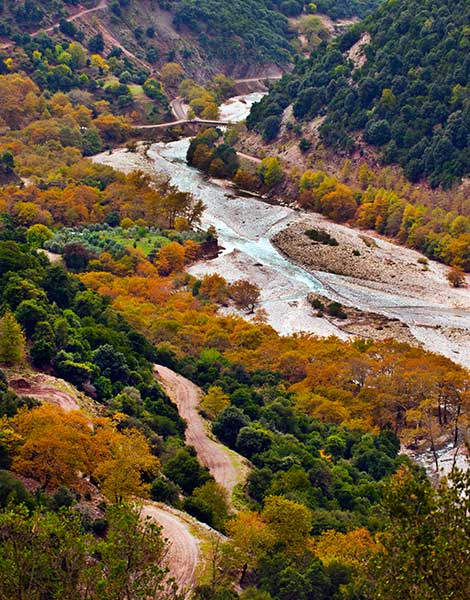
© Clairy Moustafellou
Now, the president of the village, Yiannis Parthenis, awaits the new asphalt road from Lake Plastira that has just been approved, and will cover a distance of only 5 kilometers. On the other side lies the plateau of Niala, as well as other locations which are under consideration as the possible site for a wind farm. “Half of the people speak of a destruction of the natural environment, the other half of how this will facilitate their lives, which are really very difficult during the winter. The park will also bring in money, yet it will mainly open up the roads. Each village undertakes the task of clearing the snow on its own, otherwise we would be left cut off for no one knows how long. Do you know how much this costs? If the road is built, then visitors will also come. And then perhaps some of the younger generation might decide to come back. They have returned to every other place in Greece, but not to Agrafa and its hardships,” he concludes.
High above the village, the road to the mountain pass of Aghios Nikolaos is staggering, the view over the gorge with its endless mountain peaks takes your breath away. I wonder if the locals still feel the same sense of awe, and whether they experience the same sense of freedom. Young Stefanos Dallas, whom we met as he was chopping wood, is clear on this point: “I have walked every part of these mountains, I have been looking at them ever since I was a child, they are my home. And yet the sense of awe never leaves you,” he says, as he steps nimbly right to the edge of the cliff, like a kid goat. My eyes start from their sockets, convinced that I will see him tumble into the void. “What are you scared of? That I might fall on this plateau? This is what we call this here: a plateau!”

